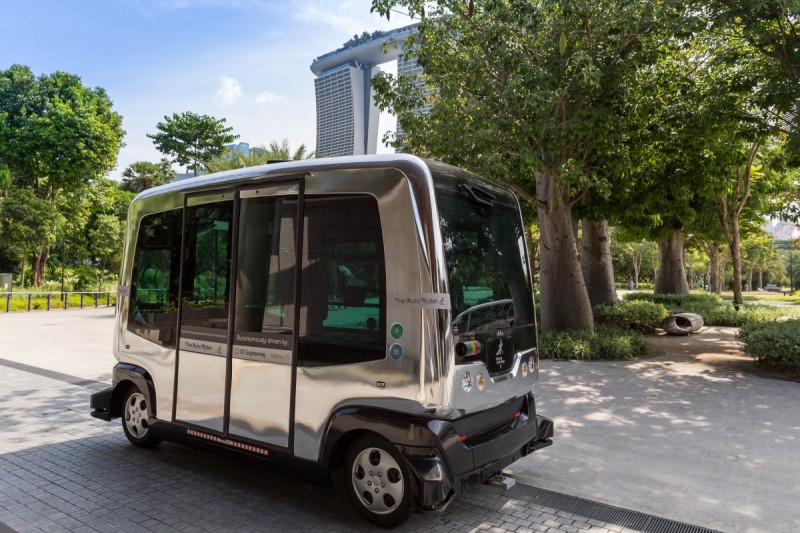National links: Cities will need to redesign themselves for self-driving cars

Autonomous vehicle in Singapore by Marco Verch licensed under Creative Commons.
Cities will need to redesign themselves for the age of self-driving vehicles. Building up infill in the El Camino Real corridor in San Francisco could alleviate the Bay Area's housing crunch. Despite their original “tech bro” reputation, e-scooters seem to have a truly diverse fan base.
Designing in the driverless age: Many experts predict a shift from human-driven to autonomous vehicles over the next several decades, and the task of building homes and offices to support today's needs as well as future ones will be in the hands of architects and designers. Designing parking garages, regulating curb space, and relating buildings to the street will be of the utmost importance. (Patrick Kiger | Urban Land Institute)
Can one corridor solve a housing crisis?: If you haven't heard by now, housing in California, especially the Bay Area, is hard to come by. Using new mapping and data analysis software, Peter Calthorpe and Joe DiStefano look at the carrying capacity of El Camino Real corridor parcels between San Jose and Daly City. If all low-density, potentially redevelopable parcels built housing, the area could gain another 249,000 units. (Peter Calthorpe and Joe DiStefano | Urban Footprint)
The diverse fandom of e-scooters: Once thought to be the transportation of “tech bros,” new research from Populus shows that scooter supporters are diverse in race, income, and gender. The 7,000-person survey conducted in 10 cities found that women see scootering in a more positive light than men. Researchers aren't sure why, but they have some theories. (Aarian Marshal | Wired)
Betting on the future of transit: Autonomous vehicles that compete with other transportation options may be decades away, but the simple promise of their existence is enough to convince some to turn away from transit. Some believe self-driving cars can solve cities' transportation problems, but others are worried that cities will take the wrong path. (Emily Badger | New York Times)
A new generation is reviving small town Texas: As more urban places in Texas get expensive, younger residents looking for a more affordable place to live are increasingly flocking to smaller towns with “good bones.” These younger transplants are testing out big ideas like opening hip restaurants and cool bars, and in the process are speeding up local economies and changing the makeup of smaller places. (John Nova Lomax | Texas Monthly)
Quote of the Week
“Mid-ride, he swerved across four lanes of traffic and took us to eat fried chicken neck tacos in East L.A. We were sitting there, gnawing at bones, next to a family whose kids were doing their homework while eating those tacos, and he was beaming. He loved the entirety of the landscape of L.A.”
Peter Meehan talking about his longtime friend and recently passed LA food critic Jonathan Gold. (CityLab)
On the podcast this week I'm joined by Mikael Colville-Andersen of Copenhagenize
